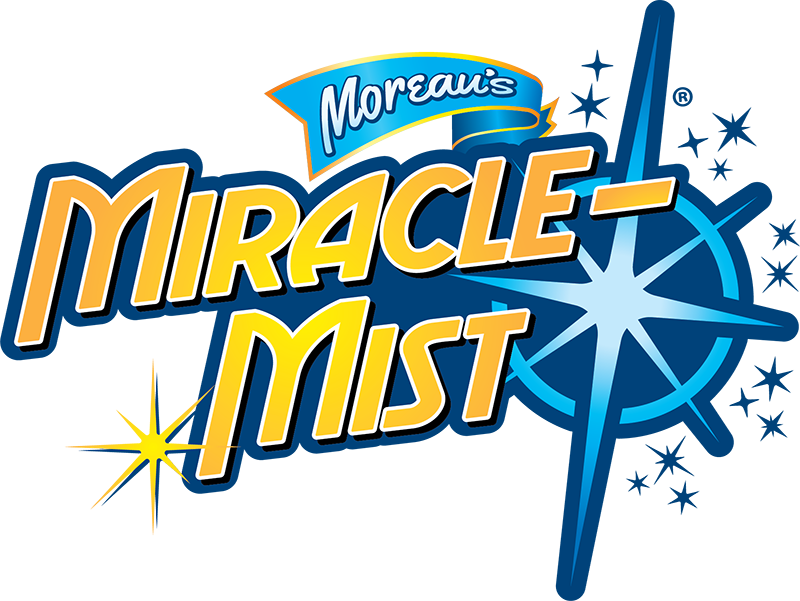Get Your Boat Ready for Summer With MiracleMist
The snow has melted, spring has begun, and it’s almost time for boating season. However, before taking your boat out on the water, you need to take it out of storage and ensure it’s properly cleaned and in working order. Unfortunately, when you first take that boat cover off, there is often some unwanted mold that has grown on the cushions and the boat’s exterior. The combination of moisture and humidity causes mildew and mold to form. Unfortunately, those two things are highly prevalent when you’re on the water.
Not exactly a fun way to start the season!
Seat cushion vinyl is very porous and can stain easily, so it’s essential to know how to clean your marine vinyl and also prevent mold from growing in the first place. In this blog, we are going to teach you how to get your boat in shape to hit the water during the summer heat.
How to Clean Your Seat Cushions
Before we get to the nitty-gritty, let’s talk about what cleaning products you shouldn’t use on a boat’s cushions.
Cleaners Not to Use on Seat Cushions
- Bleach: While bleach seems like a cure-all for everything, do not use it on your boat’s vinyl seats. The bleach will eventually remove the finish on the seats, causing sunscreen, oils, dirt, and spills to get into the porous material.
- Magic Eraser: This has become a popular sponge for cleaning many household items, but please don’t use it as a cleaner for boat seats. Like bleach, using a Magic Eraser will eventually wipe off the top layer of the vinyl, causing dirt and oils to seep into the pores.
- Household cleaners: Please don’t use any of the all-purpose cleaners on the market. They might be suitable for your kitchens and countertops, but they are not ideal for your marine vinyl. Like bleach and Magic Erasers, household cleaners are too strong to be vinyl boat seat cleaners and will eventually break down the material.
- Power Washers: While power washers may seem like a good idea, the pressure can be too much for any area of the vinyl and cause tears.
Finding the Best Boat Seat Cleaner
Now that you know what you shouldn’t use, let’s talk about finding the best seat cleaner.
Do your research to discover the best mold and mildew remover for cleaning boat seats.
Make sure your product is:
- Developed explicitly as a boat cleaner rather than for household use.
- Safe to apply to vinyl.
- Bleach-free.
- Easy to Use.
Once you’ve found the best boat upholstery cleaner that works for your needs, it’s time to start boat cleaning. However, cleaning a boat doesn’t have to be a miserable experience. As long as you have the right boat cleaning supplies, it can be fairly easy and very rewarding.
Cleaning Your Boat Seats
Spray Cleaner on the Seats
Because mold likes to form in gaps and seams, you should thoroughly spray all areas. Follow the recommendations of your mold remover regarding the amount of time it needs to sit before wiping or rinsing.
Start Scrubbing
Thankfully, if you’ve purchased a capable mold and mildew cleaner, you won’t have to work too hard to get the job done. A microfiber cloth will help remove the mold from your vinyl. Don’t forget the nooks and crannies.
Wipe Away Dirt
You’ll probably go through multiple microfiber cloths depending on how much mildew has built up on your seats, so be prepared!
Repeat as Necessary
Heavy mildew buildup is unlikely to come off the first time, so repeat the process of spraying, letting it sit, scrubbing, and wiping away the residue several times, focusing on any stubborn areas.
After using the mold and mildew remover, wash and dry the seats regularly to avoid further mildew exposure.

Best Practices for Maintaining Your Clean Seats
Now that you’ve removed the mold and mildew from your seats, how do you prevent it from coming back?
Keep Water Out
When you’ve taken your boat out of the water, make sure it’s completely dry. This includes locating any pools or small puddles of water that may have formed inside the hull. Any time you spend drying out the boat will be worth it when you don’t have to clean up mold the next time you take it out.
Keep Air Moving
The most important point to remember is to make sure your boat is adequately ventilated. Stagnant air retains moisture, and when the temperature changes, condensation occurs. Keep all areas of your boat open to allow air to circulate: cupboards, lockers, rooms, bilge covers, and so on. In addition, vents should be installed.
Use a Boat Cover
Using a boat cover will keep water out and it will also restrict airflow, which is essential for keeping your boat dry. Make sure your boat cover is well ventilated. If you’re employing a tight cover, such as shrink wrap, it’s ideal to include active ventilation in the cover’s vents, such as solar fans. Also, make sure there is no water gathering on your cover, as pooled water can leak into your boat.
Use Vinyl Protectant
Vinyl protectants have a dual purpose: they improve the appearance of your seats while also protecting them from UV harm. Mold and mildew will be less likely to occur in the future with the use of these products.
Keep Your Boat Clean With Help From MiracleMist
Boats provide us with countless opportunities to enjoy the lakes and oceans, but they also expose us to water and humidity. Thankfully, Miracle Mist can help you not only remove mildew and mold but also prevent it from forming in the future. It’s the only mold and mildew remover that takes preventative action to keep stains away for up to one year after cleaning!




